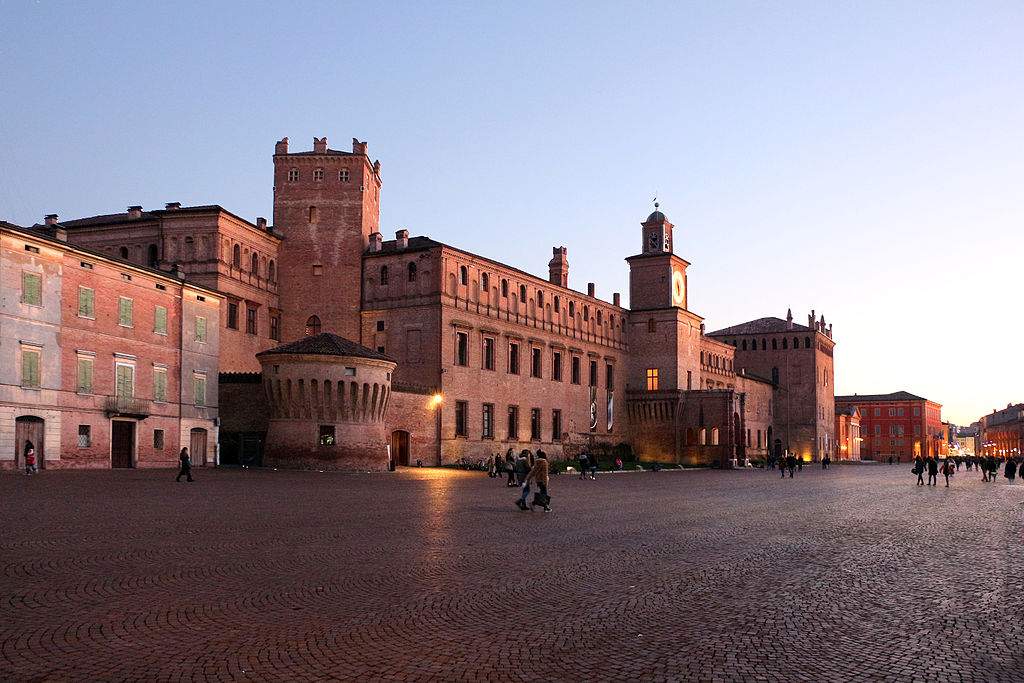This spring, Carpi ’s Palazzo dei Pio will present the new Pinacoteca di Carpi, the result of a restoration and refurbishment work in the so-called Stanze del Vescovo (Bishop’s Rooms), located in the body of the building that connects the central Renaissance portion of the Palazzo with the 15th-century Torrione degli Spagnoli (Spanish Keep). For this important event, the museum has scheduled the exhibition Rare Paintings. From Guercino to Mattia Preti to Palma the Younger, which will have precisely the function of narrating the future Pinacoteca, and is scheduled from April 4 to June 21, 2020.
The exhibition is curated by Manuela Rossi, director of the Museums of Palazzo dei Pio, and features a selection of about 100 paintings and drawings from the deposits of Carpi’s museums. Opening the exhibition are a number of large canvases, exemplifying Emilian painting of the late 16th-17th centuries, by artists such as Ippolito Scarsella known as lo Scarsellino (Ferrara, 1550 - 1620), Carpi-born Bonaventura Lamberti (Carpi, 1653 - Rome, 1721), Girolamo Martinelli (news second half of the 17th century), Sigismondo Caula (Modena, 1637 - 1724), all from local churches and collections, flanked by masterpieces such as The Baptism of Christ by Denijs Calvaert (Antwerp, 1540 - Bologna, 1619) and The Allegory of Vice and Virtue by Palma il Giovane (Jacopo Negretti; Venice, 1544 - 1628).
Remaining on the seventeenth century, one can admire Mattia Preti ’s La vendetta di Progne (Taverna, 1613 - Valletta, 1699), a painting of particular historical and iconographic importance, which refers to others of similar subject by the Calabrian artist, first and foremost Il banchetto di Erode, now in Toledo, and Le nozze di Cana at the National Gallery in London, for the details of the banquet and the richness of the details. The myth of Progne and Philomela, narrated by Ovid in his Metamorphoses, if we exclude a few book illustrations from the early 16th century onwards constitutes a very rare subject in modern artistic production. The exhibition continues with the section entitled Copies from... the great painting of the sixteenth-seventeenth century in Carpi, which reproposes high quality contemporary copies of the most famous works by painters of the Bolognese school, from Guercino to Carracci, but also by Correggio and Giorgione. To these are added a nucleus of works of considerable value from private collections, from the Roman or Tuscan spheres.
Again, portraits occupy a substantial part of the Carpi collection: here are paintings that link a wide time span from the seventeenth century to the early twentieth century: from the Philosopher, attributed to José de Ribera (Xàtiva, 1591 - Naples, 1652), to the Portrait of a Young Woman by Orfeo Messori, passing through works of great refinement, such as the Portrait of a Princess of the House of Pio from the Emilian school of the 16th century, the Portrait of Francesco IV d’Este by Luigi Manzini (Modena, 1805 - 1866) or even the Portrait of Ciro Menotti by Geminiano Vincenzi. Ideally closing the itinerary is a group of works from the 18th and 19th centuries, with subjects of urban views of Carpi, its monuments, and the Emilian countryside.
The future Pinacoteca di Carpi will be developed through two parallel itineraries, along the string of five rooms of the Stanze del Vescovo and two rooms conceived as a publicly accessible depository. The first part of the new itinerary, presented and reinterpreted precisely by the exhibition Rare Paintings, will find space in the Renaissance loggias of the Palazzo dei Pio and in the Manuzio Room, each conceived as an autonomous space, but connected to the other, as a chapter of a single story.
“An exhibition to tell about the new future Pinacoteca di Carpi,” Manuela Rossi declares. “In addition to the presentation of the new Pinacoteca project that will be born at the conclusion of the ongoing construction works in the Bishop’s rooms, the real protagonist of the path is the collection of paintings (with a selection of drawings) of the Carpi Museums. The works on display in the exhibition will complement the Renaissance ones already on display in the Appartamento nobile and the Museo della Città, finally making almost the entire pictorial collection accessible after a long time.”
The exhibition, conceived and produced by the Municipality of Carpi - Musei di Palazzo dei Pio, with the contribution of Fondazione Cassa Risparmio di Carpi, Assicoop Modena & Ferrara, can be visited Tuesday through Thursday from 10 a.m. to 1 p.m. and on Fridays, Saturdays, Sundays and holidays from 10 a.m. to 6 p.m. Full ticket 8 euros, reduced 5 euros. For all information visit the Palazzo dei Pio website.
Pictured: Palazzo dei Pio. Ph. Credit Francesco Bini
 |
| Carpi, Pinacoteca di Palazzo dei Pio reopens in spring, with an exhibition on collections |
Warning: the translation into English of the original Italian article was created using automatic tools. We undertake to review all articles, but we do not guarantee the total absence of inaccuracies in the translation due to the program. You can find the original by clicking on the ITA button. If you find any mistake,please contact us.